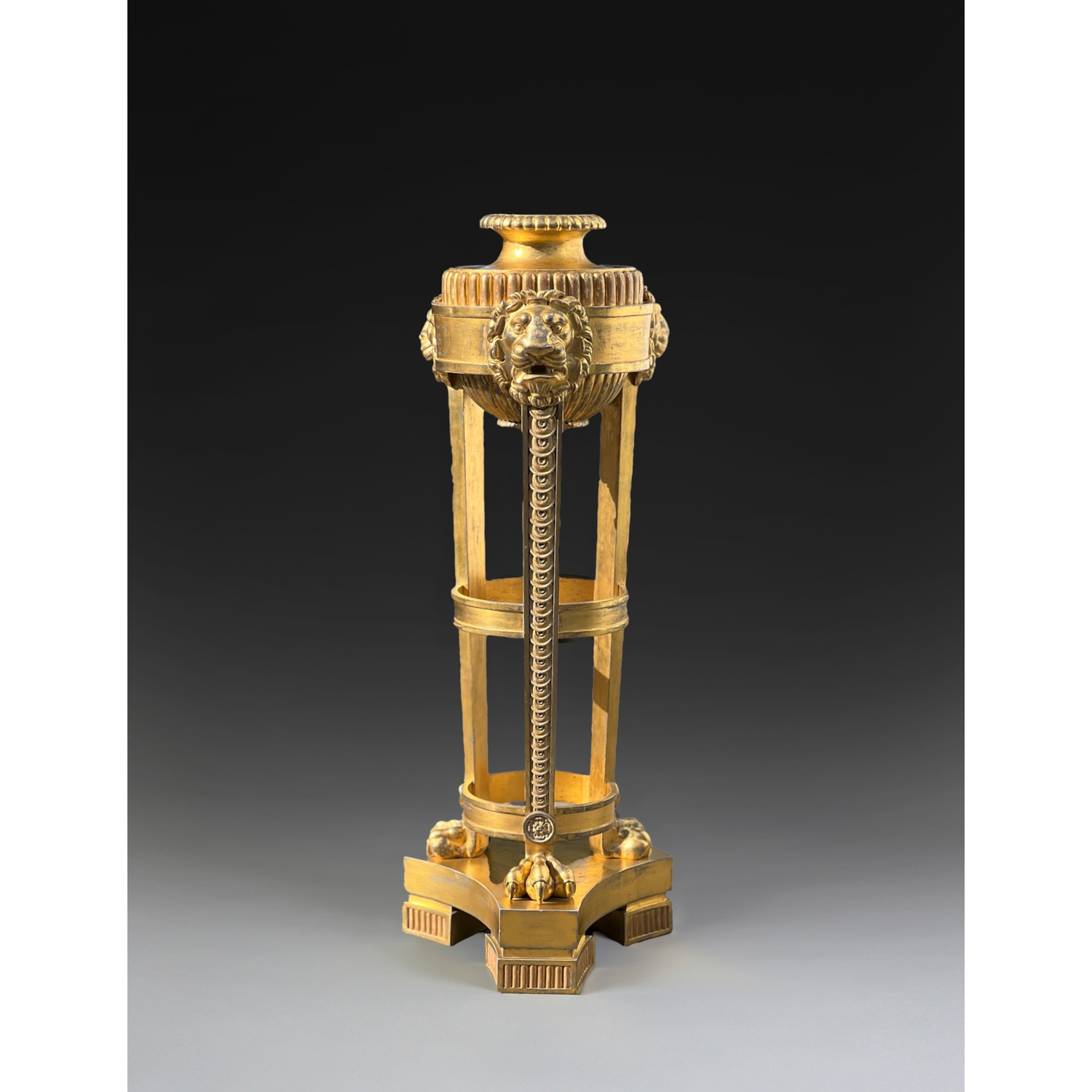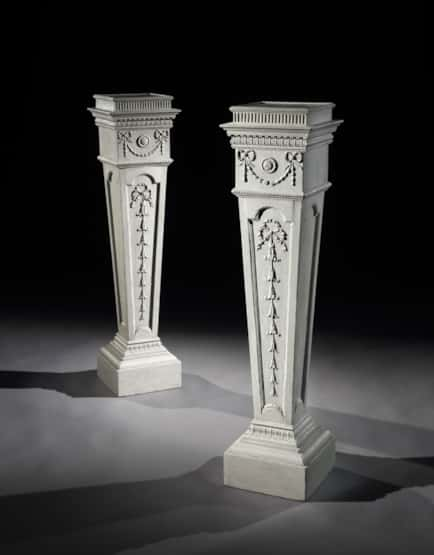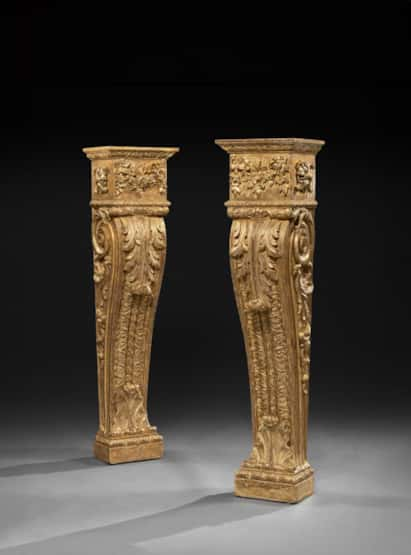A Regency Period Carved and Giltwood Torchere in the manner of Thomas Hope
English, circa 1810
REF013
A Regency Period Carved and Giltwood Torchere
English, circa 1810
The gadrooned baluster applied with lion heads and supported by a tripartite stand with carved guilloche terminating in lions paw feet resting on a concave triangular plinth and block feet.
Height 44 1/2 inches. (113 cm), Width 16 inches (40.5 cm)
The design for this unusual pedestal or torchere is inspired by the drawings of Thomas Hope. Thomas Hope (1769–1831) was a British collector, designer, and writer whose work played a major role in shaping the taste for neoclassicism in the late eighteenth and early nineteenth centuries. Born into a wealthy Anglo-Dutch banking family, Hope traveled extensively across Europe, the Near East, and North Africa, immersing himself in the ruins, art, and architecture of ancient civilizations. These journeys, particularly through Greece and Italy, profoundly influenced his vision as both a patron and designer.
DESCRIPTION
Inspired by the grandeur of Ancient Rome and the elegance of classical Greece, Hope developed a style that fused archaeological accuracy with imaginative reinvention. His 1807 publication Household Furniture and Interior Decoration illustrated interiors richly adorned with classical motifs, including columns, sphinxes, lyres, and mythological references. These designs were not mere imitations; Hope sought to reawaken the moral and aesthetic ideals of antiquity, presenting classical art as a model of virtue, harmony, and civic pride for modern Britain.
His London mansion on Duchess Street became a showcase of Greco-Roman revival taste, with each room designed as a kind of “temple” to different aspects of the ancient world. Through his collections, writings, and interiors, Thomas Hope bridged antiquity and modernity, shaping Regency-era aesthetics and ensuring that the legacy of Greece and Rome continued to inspire new generations of artists and designers.
YOU MAY ALSO LIKE
A Regency Period Carved and Giltwood Torchere in the manner of Thomas Hope




 PRINT
PRINT SHARE
SHARE

